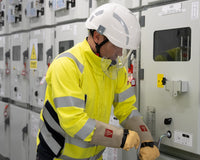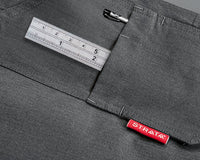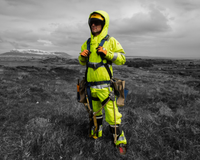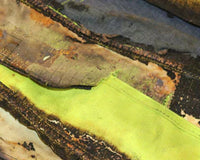Prolonged exposure to the sun can cause skin damage. But, UV protective clothing helps minimize these risks.
EN 13758-2 sets the standard for garments that shield against harmful UVA and UVB rays. The protection provided depends on a variety of factors such as fabric density and colour. The level of protection may also decrease with wear, stretching, or when wet.
EN 13758-2 sets the minimum level of protection required for textiles with solar UV protective properties, requiring a UPF rating of 40 or higher.
The EN 13758-2 standard
EN 13758 is the European standard that specifies the requirements and test methods for protective clothing designed to offer protection against ultraviolet (UV) radiation from the sun.
The first part of the standard (EN 13758-1) specifies test methods. Whereas, the second part (EN 13758-2) covers the classification and marking of garments.
This safety standard establishes a minimum Ultraviolet Protection Factor (UPF) of 40 for certified clothing that effectively protects against both UVA and UVB rays.
EN 13758-2:2003+A1:2007
The latest version of EN 13758-2 is EN 13758-2:2003+A1:2007. This standard was approved in May 2003 and an amendment was added and approved in 2007.
EN 13758-2 requirements
Protective clothing that is certified to EN 13758-2 standard sets requirements for the general clothing design and UVR protection.
General clothing design
The general clothing design requirements of EN 13758-2 are straightforward. These requirements state that:
-
Clothing designed to offer protection to the upper body shall at least cover the upper body completely;
-
Clothing designed to offer protection to the lower body shall at least cover the lower body completely;
-
Clothing designed to offer protection to the upper and lower body shall at least cover the upper and lower body completely.
UVR protection
All textiles used in protective clothing for UV rays must be tested for their UPF following the test methods outlined in EN 13758-1. Only garments with a UPF rating of 40 or higher qualify as UV protective under this standard.
|
UPF* range |
Protection |
% UV blocking |
Rating |
Classified as UV protective according to EN 13758? |
|
15 – 24 |
Good |
93.3 – 95.8% |
15, 20 |
No |
|
25 – 39 |
Very good |
96 – 97.4% |
25, 30, 35 |
No |
|
40 – 50+ |
Excellent |
97.5 – 98+ % |
40, 45, 50, 50+ |
Yes |
|
*UPF = Ultraviolet Protection Factor |
||||
To comply with this standard:
-
The lowest UPF value of any fabric in the clothing must exceed 40
-
Uniform fabrics must have an average UVA transmission of less than 5%, while non-uniform fabrics must also meet this threshold, as determined by EN 13758-1 testing
EN 13758-2 marking and labeling
EN 13758-2 details marking and labeling requirements for UV protective textiles. In 2006, an amendment (A1:2006) was made to EN 13758-2 to improve clarity and usability regarding marking and labeling.
Clothing designed to comply with EN 13758-2 must be clearly and permanently marked to ensure users understand the level of UV protection provided.
The EN 13758-2 marking and labeling requirements state both mandatory and optional markings.
Mandatory markings
Mandatory markings under EN 13758-2 include clearly displaying standard identification details in the form of:
-
The number of this standard: EN 13758-2
- The UPF rating: UPF 40+
UV protective clothing classified under EN 13758-2 must also include the pictogram for this safety standard. This pictogram is a sun icon in yellow (Pantone Process Yellow CVU) or white, with black shading, outline, and text (Pantone Black 6 CVP).
Mandatory warnings must also be clearly visible on the garment. These mandatory warnings must state the following wording:
-
“Sun exposure causes skin damage”
-
“Only covered areas are protected”
-
“The protection offered by this item may be reduced with use or if stretched or wet.”
Mandatory markings
EN 13758-2 also states optional markings that can be applied to these garments. The optional markings for UV protective clothing that complies with EN 13758-2 includes the wording “provides UVA + UVB protection from the sun.”
It is also recommended that a small leaflet is attached to the garment to explain the dangers of UV radiation exposure and the ability of the garment to reduce this exposure.

































